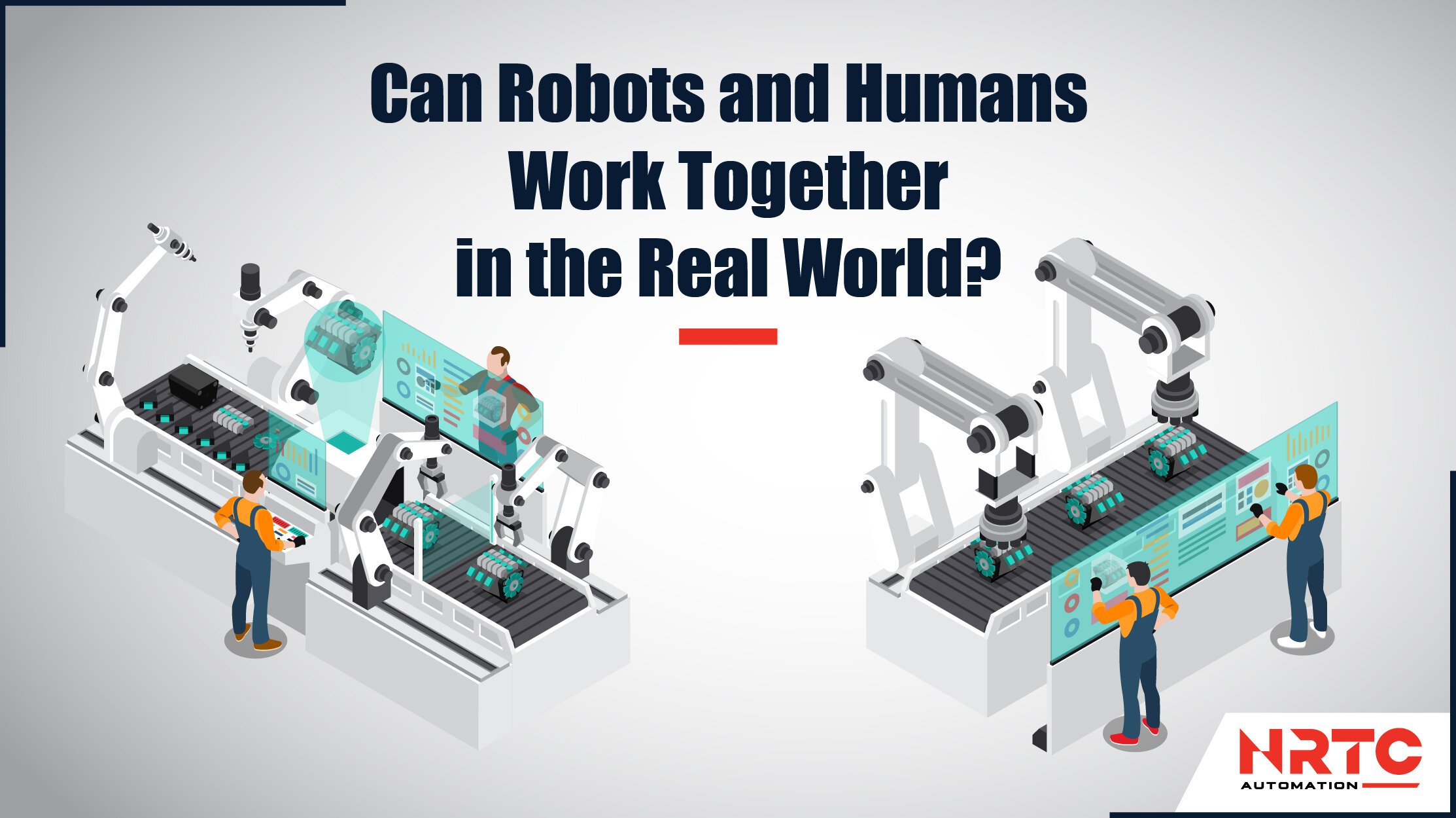Can Robots and Humans Work Together in the Real World?
Automation is a hot-button issue. Get the facts with NRTC Automation and see how robots and humans can work together for a brighter future.
Industrial robots are demonized as all-knowing machines determined to destroy families.
While the news may not help this image, reading studies and learning about how industrial robots actually help humans in the workplace will dispel the myth.
Get an inside look at how industrial robots make human lives better below.
Working alongside industrial robots
Addressing the fear of robots taking jobs
The media, as with any controversial topic, does a fine job at creating panic over automation.
According to sources like CNN, millions of low-skill jobs are at the mercy of industrial robots in the next few decades.
Furthermore, fears of humanoid robots taking over uniquely human jobs, such as therapy, is spurred on by threats of science fiction-level artificial intelligence.
However, this is simply not the case.
“Most jobs are more complex than [many people] realize,” said Google’s chief economist, Hal Varian, during a forum on the future of work.
For example, even a simple welding job takes a considerable amount of programming and engineering for a robot to accomplish.
And it takes people to program, engineer, and fix those robots. With robotic training, workers can shift from monotonous and potentially dangerous labor to safer and more creative work.
Plus, consider the fact that there will be over 2 million unfulfilled jobs in manufacturing due to a skills gap by 2030. Unemployment is rampant, but finding workers to fill these roles is getting harder. Industrial automation can close the gap for some positions, but many others require skilled human labor.
Why humans should work with robots
One way to get around this disaster mindset is to think about working with robots, rather than fighting against them for our jobs.
Robots make life better. They can handle heavy weights, withstand extreme temperatures, and work day and night without taking a sick day. These characteristics means our fast-growing population will receive the products and services needed to maintain our quality of life.
Working with robots is becoming easier as well. With collaborative robots, or cobots, workers can perform tasks right next to a cobot without fear of injury. They are designed specifically to make a human’s job easier to perform.
Benefits of using industrial automation
Robots have a lot to offer us humans. By seeing clearly through our fear, we can appreciate how industrial automation improves our lives for the better.
1. ROBOTS PROVIDE A SOLUTION FOR UNSANITARY AND DANGEROUS JOBS.
Labor during the Industrial Revolution, which transformed our world into what we know today, was dirty, difficult, and dangerous.
Factory air was polluted with smoke and soot, regulations for labor were nonexistent, and workplace safety wasn’t considered important, leading to life-endangering accidents. Government regulations fixed many of the problems caused by the Industrial Revolution.
The development of robots in the workplace further enhanced working conditions for people by taking over heavy labor and dangerous jobs that put humans at risk. Jobs like waste management and bridge inspections are being performed by robots, protecting humans from disease, injury, and death.
Today, robots continue to make work environments safer for humans.
2. ROBOTS CREATE JOBS, RATHER THAN TAKE THEM AWAY.
As mentioned above, total automation isn’t possible. Dull, repetitive tasks such as packaging food can be automated, but more complex tasks require far more programming than most robots are capable of (or most companies can afford).
Stanford Business gives the example of a gardener’s daily tasks: mowing is easy to automate, but other chores like weeding, pruning, and watering would be too complex for one robot to manage.
Because robots have provided humans with more leisure and expendable income, industries like video games, dating applications, and gyms are thriving. This creates jobs for designers, writers, personal trainers, management, customer support, and more. These jobs cannot be automated due to the nature of the work, and they are possible because of the relief robots provide from grueling, time-consuming labor.
3. ROBOTS ENHANCE WORKPLACE PRODUCTIVITY AND BRING CONSISTENT, RELIABLE RESULTS.
By taking over the repetitive and boring work, robots allow humans to focus on the important tasks. Not only that, but robots are highly consistent and perform their jobs reliably. This allows humans to know that the job is done correctly and saves time checking for quality assurance.
Automate your facility
As you can see, industrial automation is the future of manufacturing. Robots improve the health and safety of humans while increasing productivity and minimizing downtime on the manufacturing line.
If you are a manufacturer looking to automate your facility, you’ve come to the right place. NRTC Automation can design, build, and engineer a custom work cell for your specific needs. Whether you need a single, double, or triple robot cell, we have you covered.
Alongside our sister company, iGAM, we source and refurbish used industrial robots and manufacturing equipment to create affordable turnkey automation solutions for manufacturers of any size and phase.
Plus, we offer financing so you can automate on a budget. Visit our Financing page to learn more about how you can grow your company with low monthly payments.
Check out our Automation Services video below!
VISIT NRTC AUTOMATION TODAY
NRTC Automation is dedicated to providing high-value industrial automation and manufacturing equipment solutions to all our customers.
From decommissioning and tear out to industrial robotic training services to custom flexible work cells, NRTC is the key to integrate your workplace. With personalized training and custom-built designs, NRTC Automation is the destination for all your industrial automation and manufacturing equipment services.
Schedule a free consultation with NRTC today to learn more about how we can help you meet your production goals.


